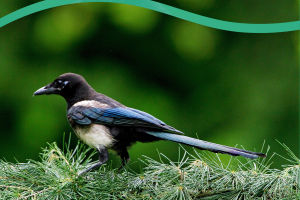Life Of Phoenix Butterfly
Generally speaking, phoenix butterflies are relatively large, such as the tricolor green phoenix butterfly, the African long-winged phoenix butterfly and the legendary ghost beauty phoenix butterfly are among the phoenix butterfly category.
Phoenix butterflies have black, yellow or white base colors with certain markings on them.
Some of the species are seasonal and behave differently at different times of the year.
They also generally prefer to lay their eggs on parasitic plants, and the larvae carry odoriferous glands to protect themselves.
The phoebe is a completely metamorphic species, and the eggs are usually spherical and distributed on the top of the leaves
The larvae are plant eaters, and many of them prefer leaves such as citrus and camphor, and some of them also carry stink glands that emit stink when they are frightened.
The phoebe generally prefers to lay its eggs on trees, and will specifically choose plants such as Brassicaceae, which can better protect the larvae and effectively increase the hatching rate.
The larvae of the phoebe will suddenly change color after a few molts, eventually turning a more brilliant green color.
At a certain stage, they will even imitate the droppings of birds to better avoid natural predators.
Adult phoebes generally inhabit open areas, suburban gardens, city parks, sparsely wooded forests, and citrus plantations, with a vertical activity altitude of about 1,000 meters.
The larvae of phoenix butterfly feed mainly on leaves of orange trees and pepper trees, and after plumage, they feed mainly on nectar, dew and decaying fruits.
Adults like to eat nectar and are good flyers, mostly active from noon to before dusk, and will lay eggs on the back of leaves after mating during the day.
After hatching, the larvae will harm the shoots, young leaves and adult leaves, and can feed on 5-6 leaves in their lifetime, releasing a foul smell when frightened to avoid enemies.
When the larvae are mature, they will spit out silk and wrap around the thorax and abdomen to form a band, and wrap around branches and other objects to pupate overwinter.
The life of a phoebe goes through four stages, trying to avoid the threat of natural enemies and going through the painful challenge of breaking through the pupa to become a butterfly.
The beautiful adults live about two weeks, find a mate, mate, find a suitable host plant for their egg babies, give birth to their babies, and die when they have completed their mission.
The larvae, adults, eggs or pupae of high-quality butterflies collected from the wild can be moved into the shed for breeding.
When collecting adults, they are usually trapped with a net cover. The butterflies caught in the set are not easily damaged, which is conducive to breeding and has a high survival rate.
On the stems, leaves, flowers and fruits of plants where butterflies feed, egg masses or swarms of larvae are often found, which can be taken off together with the stems, leaves, flowers and fruits and moved into the shed for hatching and breeding.


